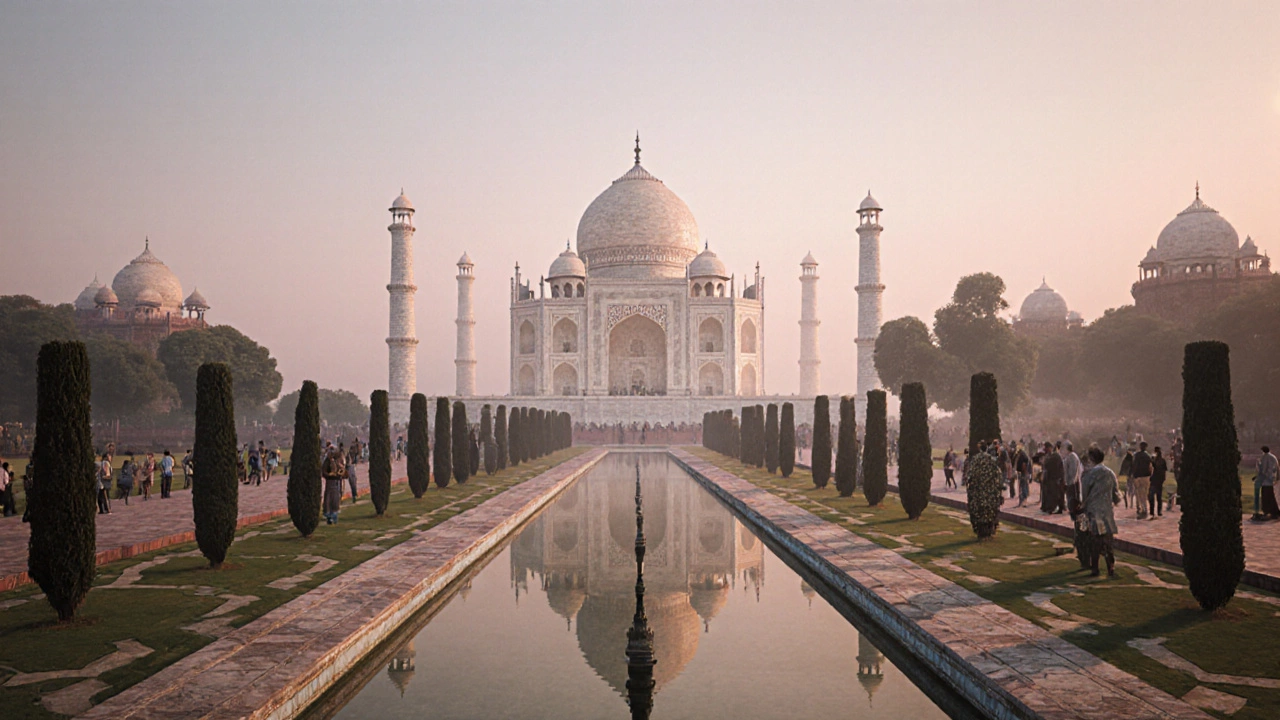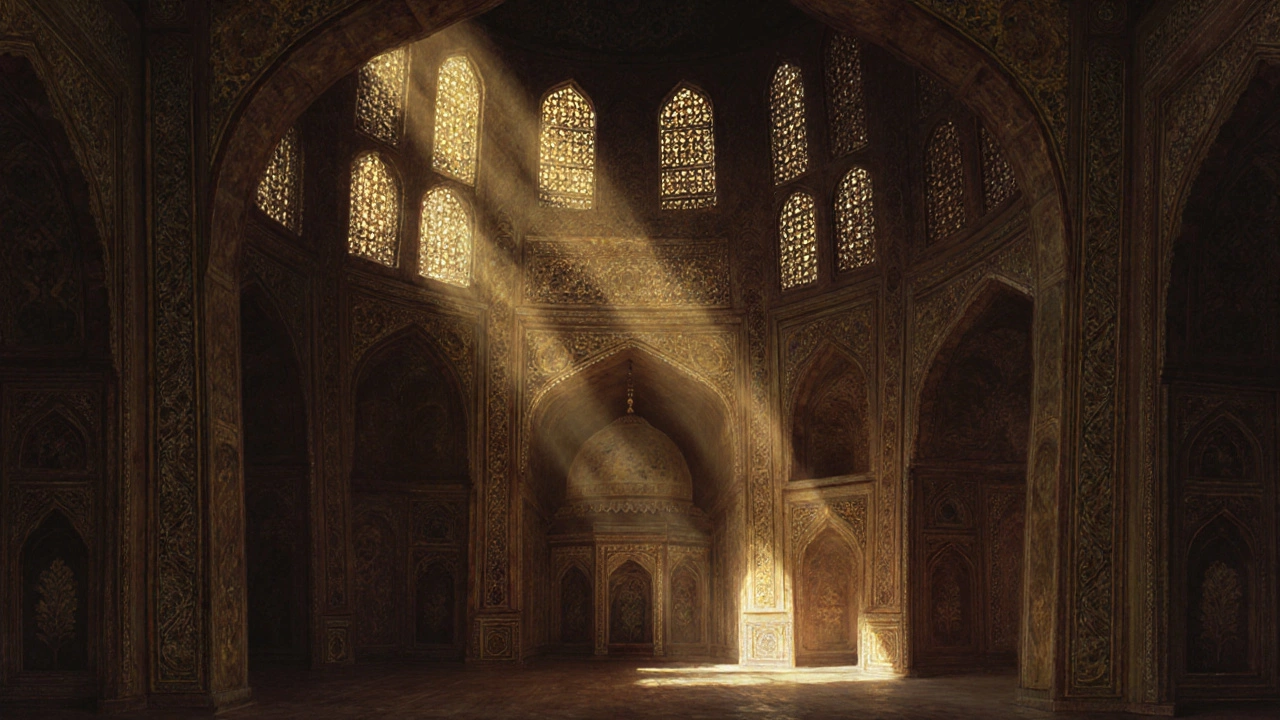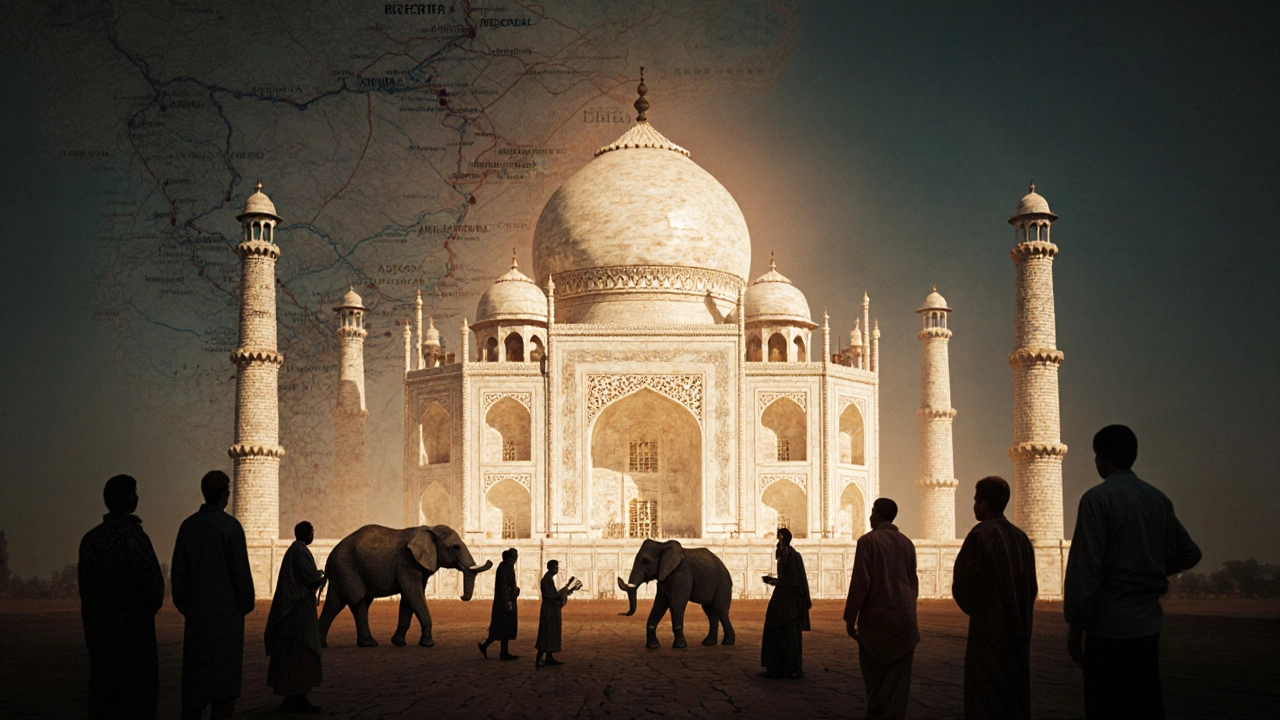Which Is the No. 1 Historical Place in India? The Real Answer Based on History, Scale, and Global Recognition
 Nov, 16 2025
Nov, 16 2025
Indian Historical Sites Comparison Tool
Compare India's Top Historical Sites
See how Taj Mahal stacks up against other iconic Indian heritage sites based on key metrics from the article.
Why Taj Mahal is #1
7 million+ visitors annually (more than Pyramids, Colosseum, and all other Indian sites combined)
UNESCO World Heritage since 1983, New7Wonders of the World since 2007
Featured in 100+ films, 500+ songs, and countless books
Agra Fort
3 million+ visitors annually
Built by Akbar, expanded by Shah Jahan
Political significance (site of Independence Day speech)
Fatehpur Sikri
1 million+ visitors annually
Built by Akbar in 1569, abandoned after 14 years
Stunning Mughal architecture and urban planning
Khajuraho Temples
1.5 million visitors annually
1,000 years older than Taj Mahal (10th-11th century)
Famous for intricate erotic sculptures
Why Taj Mahal is India's No. 1 Historical Site
Based on the metrics above, Taj Mahal consistently ranks highest across all criteria. While other sites have historical significance or artistic value, it's the unique combination of global recognition, visitor numbers, emotional resonance, and cultural impact that makes it stand out.
Ask anyone around the world which historical place in India they know best, and chances are they’ll say Taj Mahal. But is it really the No. 1? Not because it’s the oldest, or even the biggest - but because of what it represents, how many people it draws, and how deeply it’s woven into global culture.
Why the Taj Mahal Stands Alone
The Taj Mahal isn’t just a building. It’s a 17th-century love story carved in white marble. Built between 1632 and 1653 by Emperor Shah Jahan for his wife Mumtaz Mahal, it took over 20,000 workers and 1,000 elephants to complete. The marble came from Rajasthan, the jade from China, the lapis lazuli from Afghanistan, and the turquoise from Tibet. Every detail was chosen to reflect perfection - symmetry, reflection pools, inlaid gemstones, and calligraphy that changes size to look uniform from the ground.
It’s not just beautiful. It’s engineered for eternity. The minarets tilt slightly outward so they’d fall away from the main tomb in an earthquake. The foundation is built on wooden slabs that stay moist from the Yamuna River below, preventing cracking. These aren’t just architectural tricks - they’re ancient science that still works today.
More than 7 million people visit the Taj Mahal every year. That’s more than the Pyramids of Giza, more than the Colosseum, and more than all the other heritage sites in India combined. It’s the only Indian site to appear on every major global list: UNESCO World Heritage since 1983, New7Wonders of the World in 2007, and a top-ten destination in almost every travel magazine published since the 1970s.
Other Strong Contenders - And Why They Don’t Top the List
India has over 40 UNESCO World Heritage Sites. Some are older. Some are more complex. But none match the Taj’s universal pull.
Agra Fort, just 2.5 kilometers away, is a massive red sandstone palace-fortress built by Akbar and expanded by Shah Jahan. It housed emperors, hosted court intrigue, and survived wars. But it doesn’t have the emotional weight. It’s impressive - but it doesn’t make people cry.
Fatehpur Sikri, another Mughal city built by Akbar, is a ghost town frozen in time. Its architecture is stunning, its planning brilliant. But it was abandoned after just 14 years. It’s a museum, not a monument.
Red Fort in Delhi was the seat of Mughal power. It’s where the Prime Minister gives the Independence Day speech. It’s politically symbolic. But it’s not romantic. It’s not personal. It doesn’t make strangers from Norway or Brazil pause and say, ‘I have to see this before I die.’
Khajuraho Temples are famous for their erotic sculptures - and they’re 1,000 years older than the Taj. They’re a masterpiece of Hindu art. But they’re niche. They attract scholars and art lovers, not mass tourism.
Jaipur’s City Palace, Chittorgarh Fort, Qutub Minar - all incredible. But none have the global name recognition, the emotional resonance, or the sheer volume of visitors.

What Makes a Place the ‘No. 1’ Historical Site?
There’s no official ranking. But if you measure by:
- Global recognition - the Taj Mahal is instantly identifiable, even to people who’ve never been to India
- Visitor numbers - 7 million+ per year, with 30% coming from overseas
- Cultural impact - featured in 100+ films, 500+ songs, countless books and paintings
- Symbolic value - used in diplomacy, advertising, and even national identity campaigns
- Preservation status - it’s one of the best-maintained ancient sites in the world, with a dedicated conservation budget
Then the answer isn’t even close. The Taj Mahal isn’t just India’s No. 1 historical place. It’s one of the most recognized man-made structures on Earth.
Visiting the Taj Mahal - What You Need to Know
If you’re planning a trip, here’s what actually matters:
- Go at sunrise. The marble glows pink-gold, and crowds are thin. Most tourists arrive after 9 a.m. - avoid that.
- Buy tickets online. The official website (asi.nic.in) sells tickets. Don’t pay touts. A foreign adult ticket costs ₹1,300 (about $15). Children under 15 enter free.
- Bring water and a hat. Agra gets over 40°C in May. There’s no shade near the main mausoleum.
- Leave your bag behind. Only small wallets and phones are allowed inside the main building. Lockers are free.
- Don’t rush. Spend at least 2 hours. Walk around the gardens. Sit by the reflection pool. Watch how the light changes.
And skip the guided tour unless it’s led by a certified historian. Most guides repeat myths - like the claim that Shah Jahan cut off workers’ hands. That’s fiction. There’s zero historical proof.

The Real Legacy of the Taj Mahal
It’s not just about marble and mosaics. The Taj Mahal changed how the world sees India. Before it, many saw India as a land of poverty and chaos. After the Taj, they saw craftsmanship, devotion, and artistry that rivaled anything in Europe.
It’s also a quiet reminder that history isn’t always about empires or wars. Sometimes, it’s about one man’s grief, his love, and his refusal to let go.
There are older ruins. More complex temples. Bigger forts. But only one place where millions from every corner of the world stand in silence, looking at a white building, knowing they’re witnessing something that can’t be replicated.
That’s why it’s No. 1.
Is the Taj Mahal the oldest historical site in India?
No, the Taj Mahal was completed in 1653. India has sites that are thousands of years older - like the Indus Valley ruins at Mohenjo-Daro (2500 BCE), the Ajanta Caves (2nd century BCE), or the Sanchi Stupa (3rd century BCE). But age doesn’t determine popularity. The Taj is the most visited because of its emotional power and global fame, not its age.
Can you go inside the Taj Mahal?
Yes, you can enter the main mausoleum, but only with a ticket and under strict rules. You must remove your shoes and pass through a security check. Only small personal items like wallets and phones are allowed inside. The actual tombs of Mumtaz Mahal and Shah Jahan are in a quiet, dimly lit chamber below the main floor - visible through a marble screen. Photography is not allowed inside the inner chamber.
Is the Taj Mahal falling apart?
No, it’s actively preserved. The Archaeological Survey of India spends over ₹100 crore ($12 million) annually on cleaning, structural monitoring, and pollution control. The marble is washed with a special clay paste every few months to remove yellowing from air pollution. The surrounding area has strict emissions rules. While pollution has caused discoloration over decades, major structural damage has been prevented.
Are there other sites in India that should be considered No. 1?
Some argue for the Khajuraho Temples for their art, or the Hampi ruins for their scale, or the Ajanta-Ellora caves for their age and craftsmanship. But none match the Taj’s combination of global recognition, emotional impact, and visitor numbers. The Taj isn’t just a historical site - it’s a cultural icon. That’s why it’s ranked No. 1 by UNESCO, travel agencies, and millions of travelers.
What’s the best time of year to visit the Taj Mahal?
October to March is ideal. The weather is cool and dry, with clear skies perfect for photography. November and February are the busiest months. If you want fewer crowds, go in early October or late March. Avoid April to June - temperatures can hit 45°C, and haze from farming fires often blurs the view.
What Comes After the Taj Mahal?
If you’ve seen the Taj and want to go deeper into India’s heritage, head to Fatehpur Sikri next - it’s a 30-minute drive away. Then explore Agra Fort, where you can see where Shah Jahan spent his final years, gazing at the Taj through a window. After that, take a train to Orchha or Jhansi for forgotten forts and quiet courtyards.
The Taj Mahal isn’t the end of India’s story. It’s the doorway.